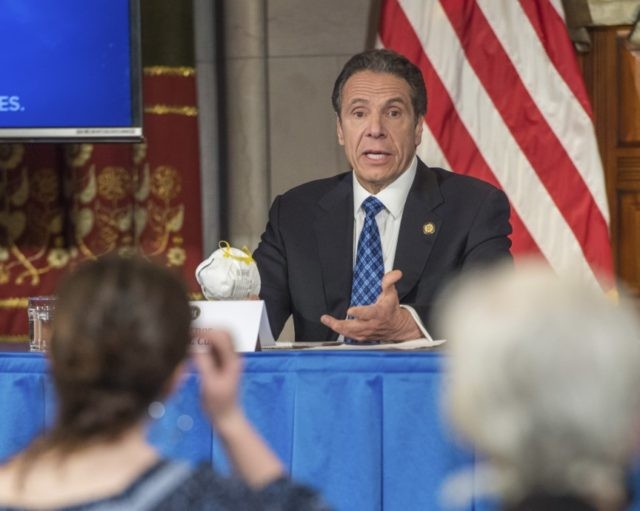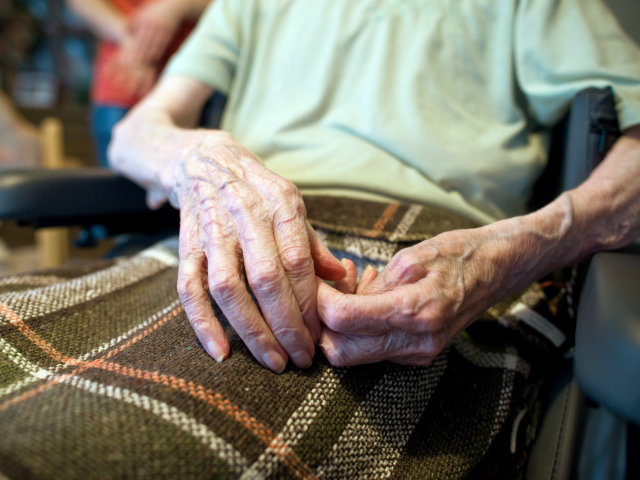Coronavirus: New York Gov. Andrew Cuomo’s Nursing Home Scandal Grows
NEW YORK (AP) — New York Gov. Andrew Cuomo, who has won bipartisan praise for rallying supplies for his ravaged hospitals and helping slow the coronavirus, is coming under increasing criticism for not bringing that same level of commitment to a problem that has so far stymied him: nursing homes.In part-lecture, part-cheerleading briefings that have made him a Democratic counter to President Donald Trump, Cuomo has often seemed dismissive and resigned to defeat when asked about his state leading the nation in nursing home deaths.
“We’ve tried everything to keep it out of a nursing home, but it’s virtually impossible,” Cuomo told reporters. “Now is not the best time to put your mother in a nursing home. That is a fact.”
Residents’ relatives, health care watchdogs and lawmakers from both parties cite problems with testing and transparency that have prevented officials — and the public — from grasping the full scale of the catastrophe.
And they are second-guessing a state directive that requires nursing homes take on new patients infected with COVID-19 — an order they say accelerated outbreaks in facilities that are prime breeding grounds for infectious diseases.
“The way this has been handled by the state is totally irresponsible, negligent and stupid,” said Elaine Mazzotta, a nurse whose mother died last month of suspected COVID-19 at a Long Island nursing home. “They knew better. They shouldn’t have sent these people into nursing homes.”
Of the nation’s more than 25,000 coronavirus deaths in nursing homes and long-term care facilities, more than a fifth of them — about 5,300 — are in New York, according to a count by The Associated Press, and the toll has been increasing by an average of 20 to 25 deaths a day for the past few weeks.
“The numbers, the deaths keep ticking up,” said MaryDel Wypych, an advocate for older adults in the Rochester area. “It’s just very frustrating.”
Cuomo faced criticism at a recent briefing for saying that providing masks and gowns to nursing homes is “not our job” because the homes are privately owned.
“It was such an insensitive thing to say,” said state Assemblyman Ron Kim, a Queens Democrat who noted that it wasn’t until just this past week that New York and neighboring states announced a plan to combine forces to buy protective gear and medical supplies for nursing homes.
“If we had focused on that early on,” he said, “we could have saved a lot of lives.”
Cuomo’s administration defended its response to the crisis, saying it has provided more than 10 million pieces of protective equipment to nursing homes and created a database of 95,000 workers who have helped out in hundreds of New York homes.
“This was an overwhelming situation for everyone,” said Jim Malatras, who serves on the governor’s COVID-19 task force. “There were deaths and it’s unfortunate. But it doesn’t mean we weren’t aggressive.”
One key criticism is that New York took weeks after the first known care home outbreaks to begin publicly reporting the number of deaths in individual homes — and still doesn’t report the number of cases. By the time New York began disclosing the deaths in the middle of last month, the state had several major outbreaks with at least 40 deaths each, most of which were a surprise to the surrounding communities and even some family members.
“They should have announced to the public: ‘We have a problem in nursing homes. We’re going to help them, but you need to know where it is,’” said former New York Lt. Gov. Betsy McCaughey, a Republican who now heads the nonprofit Committee to Reduce Infection Deaths. “Instead, they took the opposite tack: They hid it.”
Further, there has been a lack of testing in several recent New York outbreaks, including one that killed , many of whom died with COVID-19 symptoms without ever being tested.
Unlike West Virginia, New York has not mandated testing in its more than 1,150 nursing homes and long-term care facilities. Nor has Cuomo followed the lead of such states as Maryland, Florida, Tennessee and Wisconsin in dispatching National Guard teams to homes to conduct testing, triage and some care.
To be sure, it’s difficult to gauge the impact of such actions. While those states reported fewer nursing home deaths than New York, several have a larger share of nursing home deaths out of their state’s totals than New York’s 25 percent.
“No state is doing even close to an adequate job,” said Elaine Ryan, AARP’s vice president for state advocacy.
New York has faced particular scrutiny for a March 25 state health department directive requiring nursing homes to take recovering coronavirus patients.
“A number of nursing homes have felt constrained by the order and admitted hospital discharged patients without knowing what their COVID status was,” said Chris Laxton, executive director of the Society for Post-Acute and Long-Term Care Medicine. “This order made an already difficult situation almost impossible.”
The order, similar to one in neighboring New Jersey, was intended to help free up hospital beds for the sickest patients as cases surged. But critics have suggested nursing homes were already overwhelmed and a better solution might have been sending them to the virtually empty Jacob K. Javits Convention Center, which was retrofitted to treat COVID-19 patients, or an even less utilized Navy hospital ship that has since left Manhattan.
As the virus was racing through his nursing home, the head of Brooklyn’s Cobble Hill Health Center frantically emailed state health officials April 9 asking just that.
“Is there a way for us to send our suspected covid cases to the Javitz center or the ship?” Donny Tuchman wrote.
Tuchman said he was denied permission. Eventually, residents at his home would die.
Added the lawmaker Kim: “We could have figured out how to isolate these folks. We failed to do that.”
Rich Azzopardi, a senior advisor to Cuomo, said controversy over use of the convention center and the hospital ship is a “red herring” because patients discharged to nursing homes were “outside of what the feds would accept” at those facilities.
A state Health Department spokeswoman added the state is not tracking how many COVID-infected patients were admitted to nursing homes under the directive but homes should not take on new patients if they are “not medically prepared” to meet their needs.
“Throwing in new residents who may or may not have been stable at that point could not possibly have been to the benefit of any facility,” said Dr. Roy Goldberg, medical director of the Kings Harbor Multicare Center, a nursing home in the Bronx that has seen 56 deaths.
Nearly 50 Percent of California Coronavirus Deaths in Nursing Homes
Data released from the California Departments of Health and Social Services on Friday show that nursing home deaths represent almost half of the coronavirus fatalities in the state.The San Francisco Chronicle reported on the development:
There were at least 11,344 confirmed cases among staff and residents at California’s skilled nursing facilities and residential care facilities for elderly as of Thursday, according to state data. These cases account for 18.1 percent of the state’s total 62,512 cases.The information confirms that elderly people with underlying health conditions — the demographic in nursing homes — and the workers who care for them represent the most vulnerable population during the coronavirus outbreak.
Meanwhile, 1,276 staff and residents at such facilities have died of the disease, making up 49.4 percent of the state’s 2,585 deaths as of Thursday.
Given those numbers — which the state said are “provisional” — an alarming 11.2 percent of people infected with the coronavirus at a nursing home has died.
“All data in this chart is provided to offer a snapshot of COVID-19 in skilled nursing facilities in California and does not imply wrongdoing on the part of the facility,” state officials said.
Michael Connors of the California Advocates for Nursing Home Reform said in the Chronicle report that he thinks the death toll is higher than the reported numbers, calling the number of reported deaths “horrific.”
“COVID-19 is like a viral wildfire in nursing homes,” Connors said. “It’s way past time for all public health authorities in California to start treating it that way.”
So, why are we allowing a system that endangers the elderly? We've all heard the reports of nursing home abuses, and cases of neglect, and now we are seeing how badly disease can affect these places. This needs to change.
I also wonder if some of this isn't deliberate, in light of the "death panels" promoted during the previous administration, if some of these politicians aren't using this virus as a means of eliminating elderly people. We know there are many with no respect for life, who would happily do away with not only unborn children, but the elderly the disabled, and anyone else that wasn't useful to them. Is that what we are seeing now?


No comments:
Post a Comment